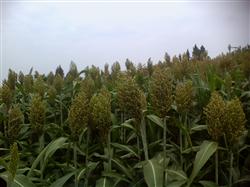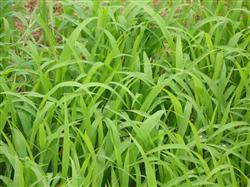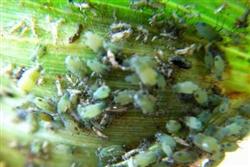How to apply fertilizer scientifically when planting sorghum

How to fertilize sorghum scientifically? Please give guidance to sorghum with wide adaptability to soil and strong fertilizer absorption. If you plant sorghum on sandy loam with rich organic matter and high fertility, it is easy to get high yield. In lean dry land, lack of phosphorus and low potassium, you must apply more fertilizer in order to get a good harvest. The plant of sorghum at seedling stage is small, and the amount of fertilizer needed is not much, but it is more strict. From jointing to flowering, the plant grows vigorously, and the distribution center of nutrients changes from stems and leaves to young spikes from jointing to flowering, and finally stored in the panicle to form grains. Therefore, ensuring adequate nutrition supply at this time is the basis of high yield. From flowering to maturity, the nutrition supply of nitrogen, phosphorus and potassium directly affects the grain filling and ripening of sorghum. Appropriate amount of nitrogen supply can accelerate grain filling and increase the protein content in grains, but too much too late will also lead to late ripening and reduce yield and quality. It is generally required to apply 2000 to 3000 kilograms of organic fertilizer per mu, 15 to 25 kilograms of superphosphate and 10 to 20 kilograms of potash fertilizer as base fertilizer. There are two methods of spreading and strip application of base fertilizer. Strip application is applied by ridging and trenching before and after sowing. In addition, when sowing, 1000 kg of rotten dilute dung water or a small amount of nitrogen fertilizer is applied as seed fertilizer, which is beneficial to the whole seedling. Topdressing is mainly available nitrogen fertilizer, mainly applying jointing fertilizer and booting fertilizer. The best topdressing stage of sorghum is at jointing stage and big trumpet stage, which can promote panicle differentiation and reduce floret degeneration. When the topdressing of urea exceeds 15 kg per mu, it should be applied in stages. Sorghum topdressing before heavy after light, heavy application of jointing fertilizer (jointing stage), light application of booting fertilizer (booting stage), generally 5 to 8 kilograms of potash fertilizer per mu and 40 kilograms of ammonium bicarbonate when 2/3 leaves are fully developed. Ditch strip application, hole application or spreading, should be accompanied by deep ploughing or watering, in order to give full play to the fertilizer effect. In the later growth stage, proper extra-root topdressing should be applied, and potassium dihydrogen phosphate (0.1%) or urea (2%) could be sprayed at heading and early filling stage to promote early maturity and increase yield. In the production of sorghum, we must pay attention to balanced fertilization, especially the combined application of nitrogen and phosphorus, which can avoid the imbalance of nutrient supply and significantly improve the fertilizer efficiency. On the low-yield land, the soil is lack of nitrogen and phosphorus, and the single application of a kind of fertilizer often fails to play a good role because of the imbalance of nitrogen and phosphorus ratio, resulting in fertilizer waste and little effect on increasing production. Therefore, the combined application of nitrogen and phosphorus as seed fertilizer can promote growth, grow faster at seedling stage, increase leaves, grow strongly, enhance plant metabolic function, improve plant absorptive capacity, significantly improve fertilizer efficiency, increase ear weight and increase yield by a large extent. can multiply the yield. Therefore, reasonable collocation and balanced fertilization in low-yield soil is an effective measure of economic fertilization. Click to get more sorghum planting technology click to get more grain planting technology
- Prev

Which diseases and insect pests are mainly controlled by planting sorghum?
Which diseases and insect pests are mainly controlled by planting sorghum? Please give guidance to plant sorghum to control the following diseases and insect pests: first, sorghum smut is a common disease in sorghum in Liaoning, including head smut, loose smut and head smut. Symptom recognition: head smut shows clear symptoms after heading.
- Next

How to control sorghum aphids
How to control sorghum aphids? Please give me guidance to guide sorghum aphids control methods can refer to the following: early detection of ①, early control: when aphids occur in the spot, timely elimination to prevent spread. Aphids can be wiped easily at the initial stage, and in severe cases, pesticides can be used to control aphids. ② medicament control method: A. spraying powder: every seedling stage.
Related
- The first cup of black tea in spring, the flavor and history of tea gardens in Kenya, Africa
- The computer can not only choose potatoes, but also grow tea rice. AI will grow winter oolong tea champion.
- It is not only the inflated tea bitten by insects, but also engraved with the four seasons tea in Beipu.
- The Oriental Beauty Tea Festival in Zhuxian County takes the stage at the weekend to experience the plus-size feast of oil tea.
- & quot; Oriental Beauty Tea & Exploration of Emei in Hsinchu, the hometown of quot;
- The new variety of strawberry "Tainong 1" dessert is the first choice with mellow aroma. Crimson gorgeous
- History of Tea in Taiwan: from Wild Inner Mountain to Export Tea Garden
- Two types of Taiwan Oriental Beauty Black Tea won the British three-Star Award for Childhood Tea Xiang Zhang Jiaqi changed from pilot to champion tea maker.
- Banana species and varieties: the planting history of Taiwan Xianren banana and dwarf banana is long, is banana disease resistant?
- Coffee planting Technology: Qianjie Coffee from Seedling to harvesting

